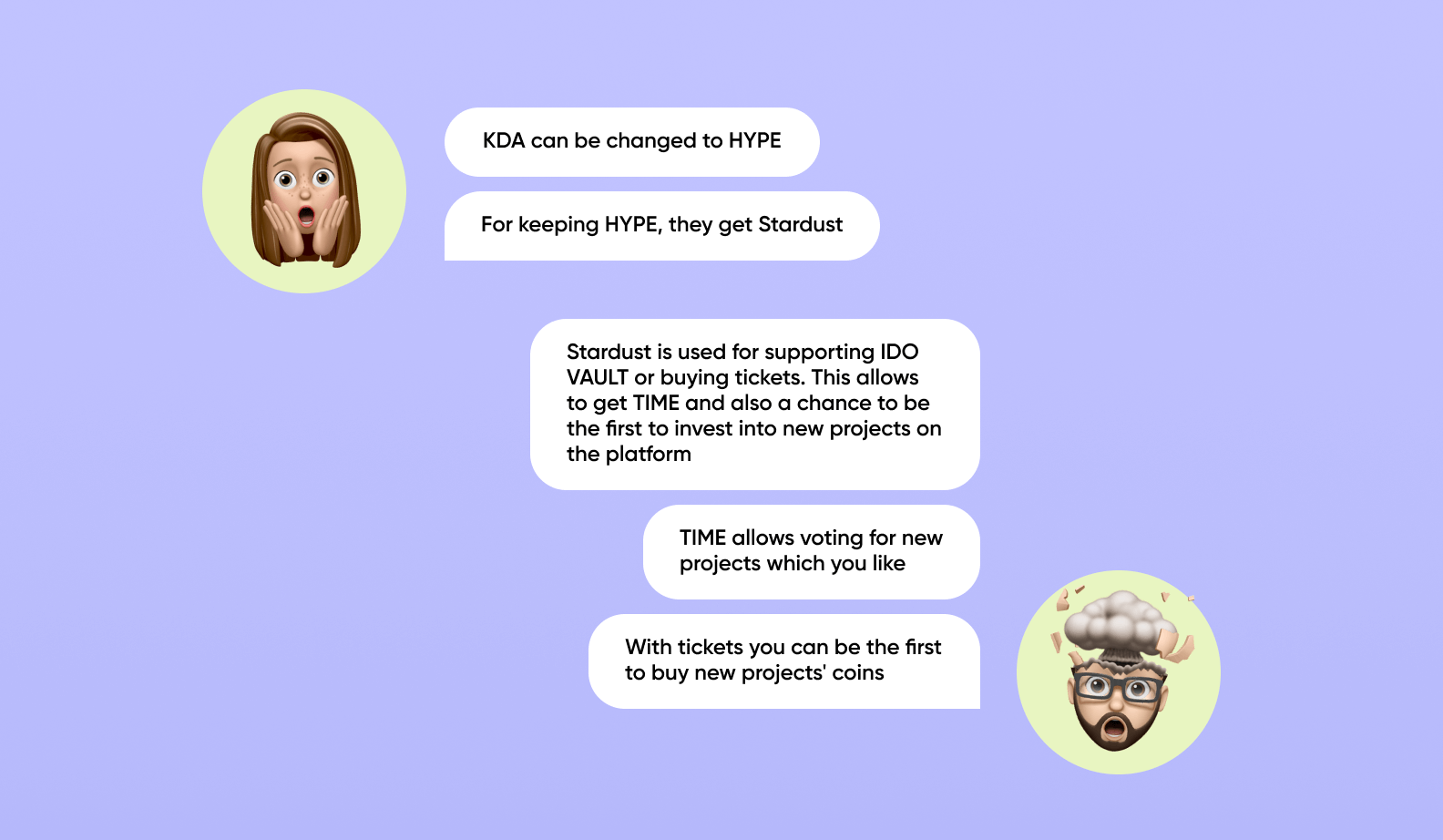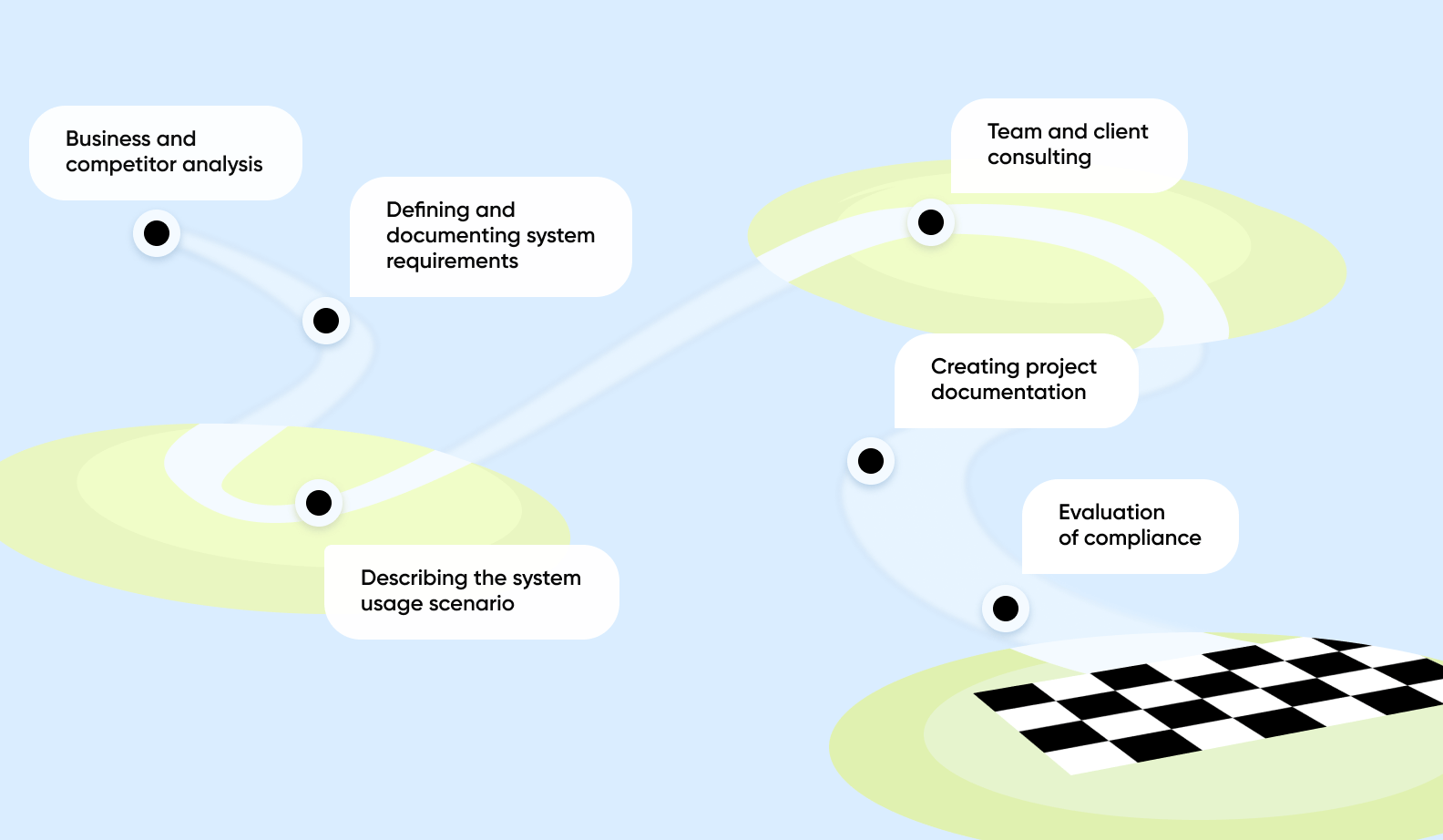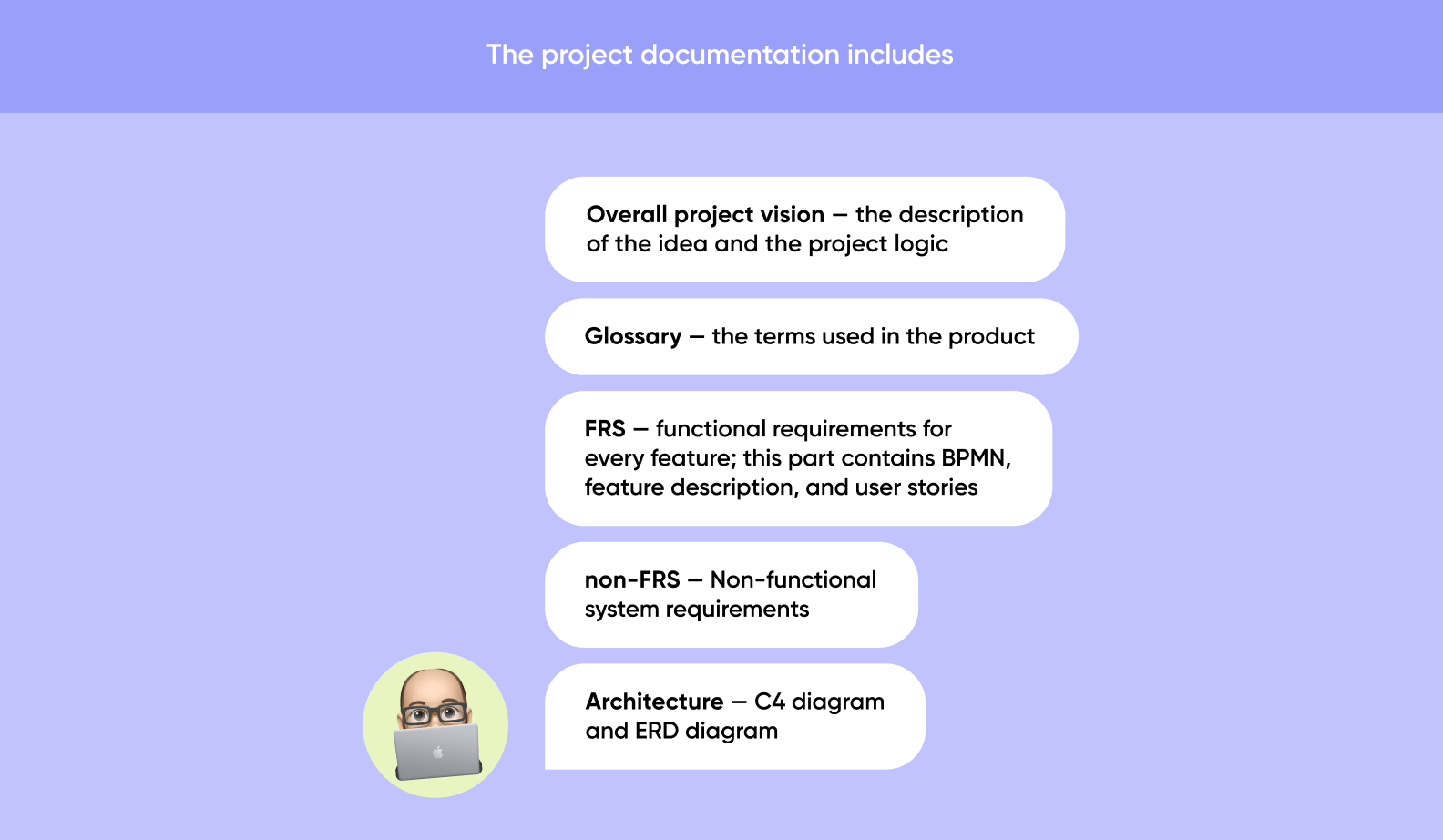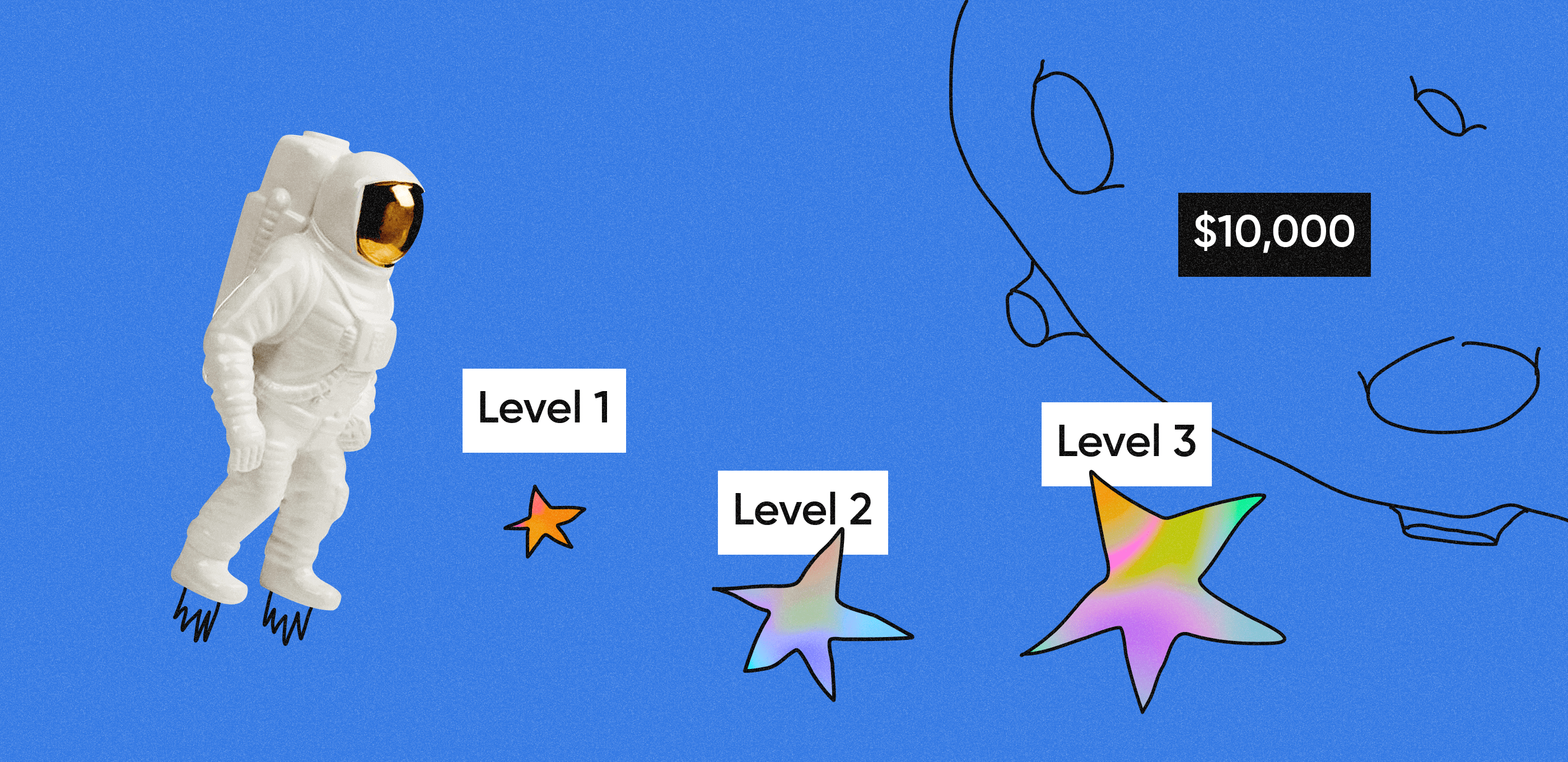Who is a system analyst?
Sometimes, everyone does a great job on a project independently, but as you put pieces together, you see the final product is not that cool. For example, a designer misses some nontrivial app usage scenarios, so the project lacks a few vital screens at the development stage. In the worst cases, it turns out later that some functions are impossible to implement technically. This results in a delayed release and search for alternative solutions. For a smooth project flow, you need a system analyst.
A system analyst is a specialist who has a bird’s-eye view of the project and makes a unified system of clients’ requirements, business specifications, design, and technical realization.
The position specifications depend on the company, as tasks can vary. In any case, a system analyst monitors every project stage to keep all the pieces together and unite the team around a single goal.
At Purrweb, the system analyst supports business logic. They make sure the project’s technical implementation complies with the original vision of the app. Basically, they make the Done match the Needed. For example, a system analyst helps a client formulate the product requirements. Then, they offer some proper technical solutions to the team .
See how this works in action.
Clear business logics
A system analyst joins a project from the first client call. Their task is to puzzle out the business logic — to implement a business idea in an app. This is vital because:
- Clients may disperse their attention on numerous functions, whereas a system analyst helps focus on the most valuable for the product.
- The team may need much time to study the client’s business tasks and get an insight into a projeсt. What the system analyst does is explore the project, unify the client’s data, and share these insights with the team. Thus, designers and developers can consult analysts to avoid bothering the clients.
Check out a case. A blockchain startup contacted Purrweb. They encouraged their users to invest in tokens and join new cryptocurrency launches. The business logic was extremely tricky; it included four kinds of tokens with different functionality and numerous user interactions. That was quite a task for the team.

Designers and developers are often terrified of the project idea explained in straightforward language
The business logic analysis resembles an investigation: a system analyst questions clients, reads documents, and consults experts. As a result, BPMN (Business Process Model and Notation) diagrams are created. Here is an example.
Such diagrams represent all the possible system usage scenarios. To make designers’ and developers’ workflow easier, a system analyst listens to a client and orderly documents everything the client describes in a regular language. It’s like translating a task from a humanitarian language into a technical one.
A complete business logic analysis enables faster design and development: the project requires fewer corrections, adjustments, and calls. However, system analysts have more to do — they stay on the project till the end and help find the right solutions without bothering clients.
What else do they do?
This is a challenging question, as further tasks of a system analyst can vary. Sometimes, clients are IT-savvy. In such cases, a system analyst switches focus on the team interaction to make a project manager’s life easier. Sometimes, system analysts get overloaded with specific tasks. Let’s have a closer look at a few valuable functions system analysts can perform to help clients.
Detecting cross-functional interactions. One system function is going to affect another. This is the least clear issue for clients. A system analyst finds all the interactions of the kind and draws the team’s attention to them to help designers and developers avoid problems at the final stages. For example, in our blockchain platform case, the analyst noticed that the more NFTs a user has, the more weekly rewards they get. Our designers took this into consideration and enabled displaying the bought NFTs on the reward screen. This way, users could see their value.

Developers say that the NFT multiplayer function links the wallet NFT purchase function and the weekly reward
Analyzing APIs. Application Programming Interface describes the ways one program can interact with another. A system analyst finds and studies the possibility of such integrations. For example, when developing a blockchain app it’s essential to integrate a KYC (Know Your Customer) service which is available in a certain country.
Contribution to database design. A system analyst knows a client’s business better than anyone else in the project so they help developers puzzle out the project. For example, they created the first version of an ER diagram that shows the system entities and their relations. Even though developers will have to refine it, they will reach the final variant faster as they have the starting point.

One glance at an ER diagram is more helpful for a developer than a hundred talks on the project matter
Assistance in making contracts. Contracts are the rules of the backend-frontend interaction. A system analyst prepares the necessary information for contracts to streamline the work of backend and frontend developers. As a result, app development takes less time, and launch gets faster as well as cheaper.
Making project documentation. It is a detailed description of the app structure and functionality. A system analyst explores all the implementation specifications to describe them in a text or diagram. With such information, it’s easier to pass a project to other developers. Besides, a client may need such documents. For example, they can use them to attract investments.
They make a task/project closure checklist. It’s crucial to have a view of an app’s perfect performance and of a complete task. A system analyst makes a checklist for testers. For example, they outline time limits for functions.
Summary
A system analyst is a project member who understands a client better than anyone. They make sure the team achieves the general goal by fulfilling minor tasks. The main results of their work are a valuable app and the related detailed documents.














